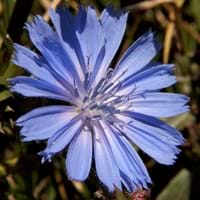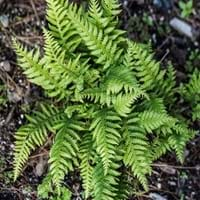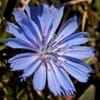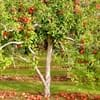Life Span
Perennial
Perennial
Type
Flowering Plants, Shrubs, Vegetable
Fern
Origin
Mediterranean
Eastern Asia
Types
Belgian Endive, Red Belgian Endive, Curly Endive (a.k.a. Frisee), Escarole, Radicchio (Chioggia) and Radicchio (Chioggia)
Not Available
Number of Varieties
Not Available
Habitat
Grassland, Mediterranean region, Wild
Damp shady woods, Wet ground, Wet lands
USDA Hardiness Zone
3-9
7-8
Sunset Zone
A1, A2, A3, H1, H2, 1a, 1b, 2a, 2b, 3a, 3b, 4, 5, 6, 7, 8, 9, 10, 11, 12, 13, 14, 15, 16, 17, 18, 19, 20, 21, 22, 23, 24
4
Habit
Clump-Forming
Arching/Fountain-shaped
Flower Color
Blue
Non Flowering Plant
Flower Color Modifier
Not Applicable
Bicolor
Fruit Color
Brown
Non Fruiting Plant
Leaf Color in Spring
Green
Light Green
Leaf Color in Summer
Green
Light Green
Leaf Color in Fall
Green
Light Green
Leaf Color in Winter
Green
Not Available
Leaf Shape
Oblong
Pinnate
Plant Season
Summer
Spring, Summer, Fall
Sunlight
Full Sun, Part sun
Full Sun, Partial shade
Growth Rate
Medium
Medium
Type of Soil
Loamy, Sandy
Clay, Loam
The pH of Soil
Acidic, Alkaline, Neutral
Acidic, Neutral
Soil Drainage
Well drained
Average
Bloom Time
Summer
Fall, Spring, Summer
Tolerances
Not Available
Wet Site
Where to Plant?
Ground
Container, Ground, Pot
How to Plant?
Seedlings
From Rhizomes
Plant Maintenance
Medium
Medium
Watering Requirements
Keep the ground moist but not water-logged, Prefer drip-irrigation instead of Over-head watering, Requires regular watering, Requires watering in the growing season
Water Deeply, Water in morning to avoid prompting diseases, Water occasionally, Water slowly, and allow to dry completely between soakings
In Summer
Lots of watering
Lots of watering
In Spring
Moderate
Moderate
In Winter
Average Water
Average Water
Soil pH
Acidic, Alkaline, Neutral
Acidic, Neutral
Soil Type
Loamy, Sandy
Clay, Loam
Soil Drainage Capacity
Well drained
Average
Sun Exposure
Full Sun, Part sun
Part sun, Partial shade, Partial Sun
Pruning
Cut or pinch the stems, Prune prior to new growth, Prune to stimulate growth, Remove dead or diseased plant parts, Remove deadheads
Remove damaged leaves, Remove dead branches, Remove dead leaves
Fertilizers
All-Purpose Liquid Fertilizer
All-Purpose Liquid Fertilizer, Apply N-P-K
Pests and Diseases
Aphids, Loopers, Root rot, Viruses, Worms
Leaf curl, Leaf rust, Red blotch, Scale, Scale insects
Plant Tolerance
Drought
Drought, Humidity, Rocky Soil, Shade areas, Wet Site
Flower Petal Number
Not Available
Single
Foliage Texture
Medium
Medium
Foliage Sheen
Matte
Matte
Attracts
Butterflies
Butterflies
Allergy
Not Available
Not Available
Aesthetic Uses
Not Used For Aesthetic Purpose
Bog Garden, Borders
Beauty Benefits
Not Available
Not Available
Environmental Uses
Air purification
Air purification
Medicinal Uses
Cancer, Digestive disorders, Inflammation, Liver problems, Stomach pain
Not Available
Part of Plant Used
Leaves, Root
Not Available
Other Uses
Used as an ingredient in coffee
Not Available
Used As Indoor Plant
No
Yes
Used As Outdoor Plant
Yes
Yes
Garden Design
Not Available
Bog Garden, Groundcover, Mixed Border, Rock Garden, Wall, Tropical
Botanical Name
Cichorium intybus
THELYPTERIS decursive pinnata
Common Name
Blue daisy, blue dandelion, blue sailors, blue weed, bunk, coffeeweed, cornflower, hendibeh, horseweed, ragged sailors, succory, wild bachelor's buttons, and wild endive
Beech Wood Fern
Winged Beech Fern
In Hindi
कासनी
Japanese Beech Fern
In German
Chicoree
Japanische Buche Fern
In French
chicorée
Japanese Beech Fern
In Spanish
achicoria
Helecho de haya japonesa
In Greek
ραδίκι
Ιαπωνικά Οξιά Fern
In Portuguese
chicória
Japonês Beech Fern
In Polish
cykoria
Japoński Buk Fern
In Latin
pancratium
Phlox Italica
Phylum
Magnoliophyta
Angiosperms
Class
Magnoliopsida
Polypodiopsida
Order
Asterales
Polypodiales
Family
Asteraceae
Thelypteridaceae
Genus
Cichorium
Thelypteris
Clade
Angiosperms, Asterids, Eudicots
Not Available
Tribe
Cichorieae
Not Available
Subfamily
Cichorioideae
Not Available
Number of Species
Not Available
Not Available
Importance of Chicory and Japanese Beech Fern
Want to have the most appropriate plant for your garden? You might want to know the importance of Chicory and Japanese Beech Fern. Basically, these two plants vary in many aspects. Compare Chicory and Japanese Beech Fern as they differ in many characteristics such as their life, care, benefits, facts, etc. Every gardener must at least have the slightest clue about the plants he wants to plant in his garden. Compare their benefits, which differ in many ways like facts and uses. The medicinal use of Chicory is Cancer, Digestive disorders, Inflammation, Liver problems and Stomach pain whereas of Japanese Beech Fern is Not Available. Chicory has beauty benefits as follows: Not Available while Japanese Beech Fern has beauty benefits as follows: Not Available.
Compare Facts of Chicory vs Japanese Beech Fern
How to choose the best garden plant for your garden depending upon its facts? Here garden plant comparison will help you to solve this query. Compare the facts of Chicory vs Japanese Beech Fern and know which one to choose. As garden plants have benefits and other uses, allergy is also a major drawback of plants for some people. Allergic reactions of Chicory are Not Available whereas of Japanese Beech Fern have Not Available respectively. Having a fruit bearing plant in your garden can be a plus point of your garden. Chicory has no showy fruits and Japanese Beech Fern has no showy fruits. Also Chicory is flowering and Japanese Beech Fern is not flowering . You can compare Chicory and Japanese Beech Fern facts and facts of other plants too.





